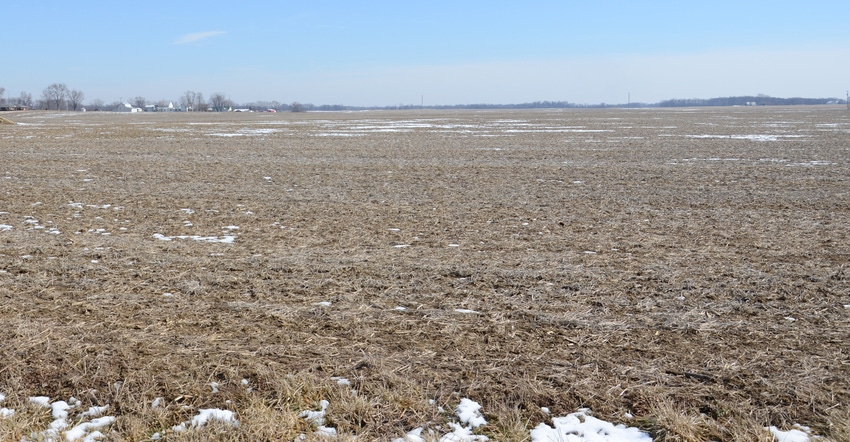January 29, 2019

By Shannon Zezulu
Are you ready for spring? Most Indiana winters involve fluctuating weather conditions — cold weather followed by a warmup and rain. Then it’s likely to freeze again, and then warm up and rain — again. That fluctuating weather is tough on humans. But what does it do to the most important resource on your farm: the soil?
Soils expand and contract as they freeze and thaw, and can become more “loose” — which is related to the tilth of the soil. There are some advantages, as this can help with soil compaction issues. However, Gary Steinhardt, Purdue University Extension soil specialist, says the benefits of freezing and thawing in any one winter for helping mitigate soil compaction issues are highly overrated.
When the most productive 1 to 2 inches of soil thaws and is “loosened” above frozen soil, soil particles are very vulnerable to pounding rain and can even leave your farm through runoff erosion. Even if your farm is flat, you may see the impacts of winter erosion as sediment deposits throughout your fields. Currently, there seems to be a pattern of very heavy, intense rainfall events during later winter and into spring, when soils are very vulnerable to soil erosion.
Many Indiana farmers take every possible course of action to protect their valuable topsoil during the winter. Farmers I know who don’t use tillage and who plant cover crops are taking care of their soil. Crop residues and cover crops all work together to moderate extreme air temperature swings and protect the soil when winter rains come. Even when the top few inches of soil thaw, plant residues and cover crop roots will maximize the chance that valuable topsoil will stay in place.
Prepare soil for planting
As you get ready for the 2019 planting season, do some early scouting. Do you see areas of soil erosion? In many cases, some of the worst cases of gully erosion happen when intense rains take place on semifrozen ground, many times eroding all the way down to the freeze line.
Also, many times these eroded areas are a precursor to additional soil erosion that may occur later in the growing season. Once these eroded areas get started, they’re hard to stop.
How did your soils fare this winter, and how well prepared are they for this spring’s rains? What can you do differently in 2019 to prevent erosion from occurring again? If you need solutions to help your soils survive winter, contact your local Natural Resources Conservation Service or soil and water conservation district office to start planning now so you will be ready for next winter.
Zezulu is the state resource conservationist with NRCS. He writes from Indianapolis on behalf of the Indiana Conservation Partnership.
You May Also Like




